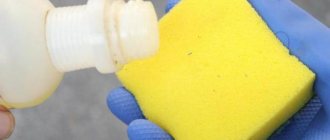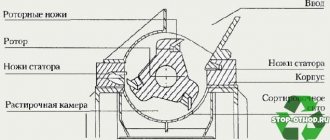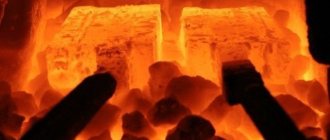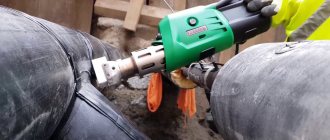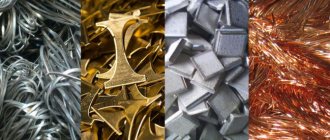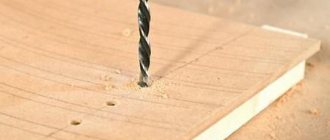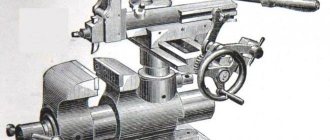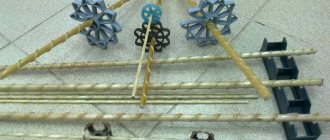Often, when you pick up an object shiny with metal, you are surprised at its light weight and realize that it is plastic or wood with a metal coating. Chemical metallization helps to obtain a mirror or matte nickel, chrome, copper or aluminum coating on ordinary ferrous metal or a non-metallic surface. Technology available not only in production, but also at home.
Variety of metallization processes
You can apply a thin layer of metal to any object with a hard surface using various methods, the most commonly used are:
- Galvanic - treatment with electrolyte in special containers.
- Electric arc - by spraying an electrode metal melted by electric arc melting onto the surface with a jet of compressed air.
- Gas plasma - molten metal is applied to the object being processed in a finely dispersed form.
- Cladding is the hot rolling of products with a deposited layer of metal.
- Diffusion - penetration of atoms of the applied coating into the surface layer of the object being processed under the influence of high temperature.
- Hot - immersing the product in a container with molten metal.
- Chemical - sequential application of coating in several layers, similar to painting.
The first 6 methods of surface treatment are performed using complex technology, require special equipment, and such coatings are applied under production conditions. The latter, chemical metallization, is optimal for doing at home.
Scope of metallization of plastics
The scope of application of metallization is the production of finished products from dielectrics, which, having some properties of a metal part, have less weight and are much cheaper to produce. For example, parts made using injection molding machines or parts made by injection molding. Such parts can be used in industries where the mass of parts is important, for example, in the aircraft industry. A separate area is the production of conductive layers in the manufacture of printed circuit boards.
This type of electroplating, known as galvanoplasty, is essentially the process of applying a layer of metal to a mold or workpiece made of wax, plaster or other plastic material. Using electroplating methods, metal copies of art objects, bas-reliefs, sculptures, various artistic products such as metallized tree leaves, flowers, fruits and much more are made.
Advantage
The purposes of metallization are varied, in most cases it is to impart or increase certain qualities:
- resistance to corrosion processes;
- resistance to mechanical damage;
- wear resistance;
- decorativeness.
The quality of the film depends on the composition of the metal:
the cheapest zinc coating increases anti-corrosion qualities, is actively used in construction to protect embedded parts, steel sheets are coated with zinc before coating with plastics and profiling;
- chromium increases hardness, imparts heat resistance, and makes products attractive in appearance;
- aluminum coating protects parts of equipment operating at elevated temperatures (up to 900°C);
- coating with copper or tin gives a noble appearance even to plastic objects;
- silver produces a mirror-like shine.
When carrying out work, the main condition for obtaining results is adherence to technology.
Nickel plating of plastics
After activation (without rinsing!) the parts are immediately transferred to a nickel plating . There is a choice of solutions (g/l):
- Nickel sulfate - 30, sodium hypophosphite - 10, sodium acetate - 10. Solution temperature 90 °C, metal film growth rate 15 µm/h.
- Nickel chloride - 30, sodium hypophosphite - 10, sodium citrate - 100, ammonium chloride to pH = 8-9. Solution temperature 90 °C, growth rate 6 µm/h.
- Nickel chloride - 30, sodium hypophosphite - 10, sodium citrate - 10. Solution temperature 85 °C, growth rate 5 µm/h.
Solutions are prepared in the following sequence. First, all components except sodium hypophosphite are dissolved in most of the water. It is separately dissolved in a small part of water. Immediately before loading the parts, both solutions are mixed.
Chemical metallization
Chemical metallization is the formation of a thin film of metal on the surface being treated under the influence of various chemical reagents. This method can be used to obtain coatings with zinc (zinc plating), chromium (chrome plating), aluminum (alitizing) and others. Using this technology, it is possible to obtain an even layer of metal on materials with different types of surface: smooth - glass, porcelain, polished stone, or porous: wood, plastic, gypsum.
Silver metallization
Performing chemical metallization at home is quite possible, but requires careful preparation.
Workplace and equipment
As a result of the chemical reaction, a gas is released that negatively affects the mucous membranes of the respiratory tract, so the process must be carried out in a room with forced ventilation or in an open space.
Equipment you will need:
- enamel bath;
- measuring cups with a capacity of 1 l and 250 ml;
- 3 bottles of 100 ml;
- disposable syringes for 5, 20, 50 ml3;
- disposable glasses of 50 ml;
- kitchen electronic scales.
Don’t forget to get rubber gloves, a respirator, sponges, and a set of protective clothing, since when working with concentrated hydrochloric acid, caution is required, otherwise burns are inevitable.
Reagents
Depending on the material of the workpiece and the type of coating, reagents are purchased. For chemical metallization with silver, you will need the following reagents:
- hydrochloric acid;
- silver nitrate;
- tin chloride;
- sodium hydroxide;
- ammonia;
- glucose;
- formalin;
- distilled water.
Preparation of solutions for:
- surface activation - stannous chloride, hydrochloric acid, distilled water;
- recovery - glucose, formaldehyde, distilled water;
- silvering - silver nitrate, sodium hydroxide, ammonia, distilled water.
Surface preparation
the surface is prepared in several stages. Porous and painted products are sanded, the old paint layer is removed, the surface is cleaned of dust, washed and degreased. You can degrease with white spirit, acetone or a solution of sodium hydroxide in water t= +40...+60°C. The surfaces are wiped with a sponge containing a degreasing compound, then washed with distilled water with another sponge. The prepared surface must be completely wetted with water, without dry spots - in these places defects will be inevitable.
Coating the product with an activating composition
The object to be treated is poured with tin chloride evenly over the entire surface for 1 minute, then washed with distilled water for 3 minutes.
Metallization
To obtain a uniform metal film, a solution of a reducing agent and silver plating is sprayed onto the product simultaneously and in equal volumes. Since the resulting mirror film is very thin and not durable, it can be strengthened with a protective varnish - transparent or tinted.
The described method resembles the painting process. There is another, more complex way of performing work - electrochemical metallization.
Vacuum metallization
The technology consists of spraying nichrome or aluminum onto plastic using a vacuum. The application of metal to plastic using a vacuum is carried out in a special chamber. The technique is widely used for applying metal film to various surfaces, for example, car parts, plastic fittings, plumbing fixtures, lighting equipment, etc. To protect the metal, special paint and varnish compositions are used that are characterized by increased hardness and resistance to moisture.
Vacuum chamber for metallization
Electrochemical metallization
This technology requires knowledge of the rules of electrical work, the use of rubber gloves and appropriate shoes to avoid burns and electric shock.
Equipment
To complete the work you will need an enamel bath and a blowtorch. A metallization installation is being prepared - a conductive base to which the parts to be processed will be attached. Current is supplied.
Reagents
The process is carried out in an electrolyte solution; to prepare the surface, an alkaline solution or a solution of sodium hydroxide in warm water is required. For chrome plating of parts, 6-valent chromium anhydride and 3-valent chromium sulfate or chloride are used.
Product preparation
The surfaces are thoroughly cleaned of grease and oil stains and paint layers using sandpaper, cleaned of dust, then washed with a degreasing compound and distilled water.
Metallization process
To obtain a high-quality result, it is important to maintain the temperature regime (80°C) and constant current density. The products are fixed on a conductive base, current is supplied, and they are lowered into a bath of electrolyte for 1 hour.
To strengthen the chromium layer, it is possible to first apply an intermediate layer of another metal - copper or nickel. A chrome-plated product can be coated with clear or tinted varnish to increase layer strength and durability.
Plating metal with copper at home. Electrotype
Copper plating is the process of applying a copper layer to the surface using an electroplating method.
The copper layer gives the product visual appeal, which allows the use of copper electroplating in design projects. It also gives the metal high electrical conductivity, which allows the product to be subjected to further surface treatment.
Copper plating can be used as the main process to create a surface layer, and also as an intermediate operation for the subsequent application of another metal layer. This method includes, for example, the process of silvering, chrome plating or nickel plating.
Copper plating can be done at home. This makes it possible to solve many everyday problems.
Electroplating at home: equipment and materials
To perform copper coating yourself, you need to purchase the necessary equipment and materials for the process.
First of all, you need to prepare a source of electric current. Various home craftsmen advise using current strength, which varies over a wide range. Work must be carried out on direct current.
As a current source, you can take a KBS-L battery with a voltage of 4.5 volts or a new Krona brand battery with an operating voltage of 9 volts. You can also use a low-power rectifier instead, which produces a voltage of no more than 12 volts, or a car battery.
It is mandatory to use a rheostat to regulate the voltage and smooth exit from the process.
For the electrolyte solution, a neutral container should be prepared, for example, made of glass, as well as wide plastic dishes that are sufficiently sized to accommodate the part. Containers must withstand temperatures of at least 80°C.
You will also need anodes to ensure coverage of the entire surface of the part. They are designed to supply current to the electrolyte solution and distribute it over the entire area of the part.
To carry out electroplating at home, you will also need chemicals to prepare the solution:
- copper sulfate,
- hydrochloric or other acid,
- distilled water.
Having prepared everything you need, you can start working.
:
Copper plating of steel with copper sulfate is one of the main processes in the field of electroplating because it is used to pre-plate copper. It has high adhesion to the steel surface, unlike other metals that do not have good adhesion to steel. If the technology is followed, the copper layer adheres perfectly to steel products.
There are two coating technologies: with immersing the product in an electrolyte solution and a method of non-contact coating of the surface with copper without placing it in a liquid electrolyte solution.
Copper plating by immersion
The process is carried out following the following steps:
- The oxide film is removed from the surface of the steel part using sandpaper and a brush, and then the part is washed and degreased with soda and a final rinse with water.
- Two copper plates are placed in a glass jar, connected to copper conductors, which serve as the anode. To do this, they are connected together and connected to the positive terminal of the device used as a current source.
- The workpiece is suspended freely between the plates. The negative pole of the terminal is connected to it.
- A tester with a rheostat is built into the circuit to regulate the current.
- An electrolyte solution is prepared, which usually includes copper sulfate - 20 grams, acid (hydrochloric or sulfuric) - from 2 to 3 ml, dissolved in 100 ml (preferably distilled) water.
- The prepared solution is poured into a prepared glass jar. It should completely cover the electrodes placed in the jar.
- The electrodes are connected to a current source. Using a rheostat, the current is set (10-15 mA should be per 1 cm2 of part area).
- After 20-30 minutes, the current is turned off, and the copper-plated part is removed from the container.
- A stranded copper wire is taken, the insulating coating is removed from one end, and the copper wires are given the appearance of a kind of brush. For convenient use, the “brush” is attached to a handle-holder (you can take a wooden stick).
- The other end of the wire without a brush is connected to the positive terminal of the voltage source being used.
- An electrolyte solution is prepared based on concentrated copper sulfate with the addition of a small amount of acid. It is poured into a wide container, necessary for convenient dipping of the brush.
- The prepared metal part, cleaned of the oxide film and degreased, is placed in an empty bath and connected to the negative terminal.
- The brush is moistened with the prepared solution and moved along the surface of the plate without touching it.
- Once the required copper layer has been achieved, the process ends and the part is washed and dried.
:
Copper plating without immersion in electrolyte solution
This method is used not only for steel products, but also for aluminum and zinc products. The process goes like this:
Features of the plastic metallization process
The process of electrochemical metallization of plastics differs from chemical metallization by the use of intermediate layers. Primer and intermediate layers relieve internal stresses arising due to different coefficients of thermal expansion of dissimilar materials.
A metal priming sublayer is applied to plastic products using a current density of 0.5...1 A/dm2. The use of a higher density current can lead to delamination of the soil at the junction of conductive elements. Defects can be avoided by applying an additional copper or nickel primer coating, also with low-density current. Metallization with the finishing layer is performed as usual.
Metallization of plastic with copper
The process of applying a layer of copper to plastic in stages:
- Preparation. The product is sanded and treated with an abrasive compound, removing all bulges and smoothing out defects. 2. Degreasing. Acrylate plastic is degreased with a solution of caustic soda for 24 hours, polyamide plastics are treated with gasoline or white spirit, then washed with distilled water. 3. Sensitization. A film of tin hydroxide is formed on the surface by placing a liter of tin chloride and 40 g of hydrochloric acid in a 0.5% solution for 1 minute. 4. Activation. The object being treated is immersed in silver nitrate for 3-4 minutes. 5. Metallization. The process is carried out in a solution of 200 g per liter of copper carbonate, 200 g per liter of 90% glycerin, 1 liter of 20% caustic soda at t = 18...25C. The copper coating can be additionally protected with varnish.
How metallization of plastic products is performed
Dissimilar materials such as metal and plastic have different coefficients of thermal expansion. In this regard, when applying a metal layer to a polymer material, the occurrence of internal stresses cannot be avoided, which can be stabilized by the underlayer surface. Copper is usually used to create it. When the preliminary copper plating of a plastic product is completed, a finishing layer of nickel or chromium is applied to it.
The structure of the coating obtained as a result of metallization of plastic can be formed from several layers, which can be:
- shiny copper layer;
- copper layer with a matte surface;
- semi-shiny nickel layer;
- nickel layer with shine;
- nickel layer with matte surface;
- conversion layer.
Types of multilayer electroplating coatings applied to plastic
The metallized layer applied to a plastic product can have not only a different structure, but also different decorative characteristics. So, it can be a velor, shiny, bleached, patinated, blackened and other types of coating. Plastic is metallized not only to improve its decorative characteristics, but also to extend its service life. In particular, nickel deposited on a plastic product compresses its surface, thereby helping to strengthen it.
Depending on the purpose for which metallization of plastic is carried out, it is performed using electrolytic solutions of various types. Such solutions can be:
- electrolytes for bright copper plating;
- electrolytic solutions for coating the surface of plastic products with nickel;
- solutions that create coatings interspersed with solid particles, or velor-type coatings.
Nickel-plated parts
A plastic product can be metalized not only with chromium and nickel, but also with zinc and tin. With the help of films of these metals applied to the plastic surface after passivation, the workpiece is protected from the negative effects of high humidity and the formation of plaque.
Since the metal sublayer created on the plastic surface does not have very high electrical conductivity, the procedure for electrochemical metallization of plastic is carried out using a low-density current (0.5–1 A/dm2). If a higher current density is applied, this will lead to a bipolar effect, which in turn will cause the sublayer to dissolve in the place where the product is connected to the wire supplying electric current to it. In order not to encounter such a negative phenomenon, an additional layer of copper or nickel is applied to the formed sublayer, and this is done using a low-density current. Subsequent metallization of plastic is carried out in normal modes.
Features of applying metal coatings using the electroplating method
Metallization of plastic using the galvanic method is carried out in fairly dense electrolytic solutions. A stable position for the workpieces in such solutions is ensured by hanging special weights.
Electroplating scheme
To form a high-quality galvanic coating on the surface of a plastic product, you also need a larger number of contacts through which electric current is supplied to the sublayer of the workpiece. Before metallization of plastic, it is necessary to perform several rather complex procedures that will ensure good adhesion of the plastic to the applied metallized layer.
The essence of adhesion and the factors influencing it
Adhesion, as is known, is a characteristic of the quality of adhesion of dissimilar materials to each other. In order for the adhesion between the plastic base and the metal coating to be of high quality, the peeling strength of the coating should be 0.8–1.5 kN/m, and the tensile strength should be 14 MPa. Modern technological methods of metallization of plastic make it possible to achieve adhesion, the value of which reaches 14 kN/m.
To date, there is not a single theory that could accurately explain all the nuances of the adhesion of dissimilar materials to each other. If we focus on the chemical nature of adhesion, then it arises as a result of the chemical interactions of dissimilar materials. In particular, during metallization of polymer materials, such bonds appear between functionally active groups present on the surface of the plastic and the metal deposited on it.
Types of destruction of adhesive joints
There is also a molecular theory according to which adhesion between dissimilar materials occurs due to the fact that intermolecular forces are present at the interfacial surface, which promote adhesion. According to the same theory, adhesion is determined by the interaction of two poles or the occurrence of hydrogen bonds between dissimilar materials.
According to electrical theory, the cause of adhesion is the electrical double layer that appears when a pair of bodies interacts. In such a layer, which prevents bodies from moving away from each other, electrostatic forces of attraction of positive and negative charges are formed.
The most recognized among specialists is the diffusion theory, according to which adhesion occurs due to the formation of intermolecular bonds between dissimilar materials. As a result, a new intermediate layer is formed at the boundary of contact of the two materials, and such a boundary is actually erased.
There is also a mechanical theory that explains that adhesion occurs due to anchorage between the protruding parts of the applied coating and the depressions in the base material. As a result of such adhesion, so-called mechanical locks are formed, which ensure adhesion.
For durable metal deposition, a favorable plastic surface structure is required
The quality of adhesion during metallization of plastic is influenced by a number of parameters, which include:
- plastic strength;
- the presence and number of chemically active groups on the surface of the plastic;
- the presence of promoters - adhesion stimulators, which can be plasticizers, tin and chromium compounds;
- the absence of anti-promoters - elements that can not only deteriorate the quality of the intermediate layer, but even destroy it;
- structure of the applied metal;
- metallization performance modes.
Purposes of metallization of plastics
Vacuum method
Vacuum metallization of plastics is used to coat them with nichrome or aluminum. For the practical implementation of such technology, as is already clear from its name, a special chamber is needed in which a vacuum is created. Vacuum metallization of plastic is most actively used for processing automotive parts, plumbing and lighting fixtures, and plastic fittings for various purposes.
The metallized coating applied in this way is given high hardness and resistance to high humidity using special paint and varnish compositions.
